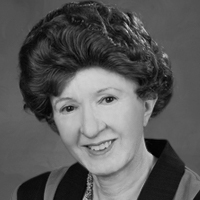Introduction
Recent years have witnessed an increased interest in the interrelationships between language and social competence. A great deal of this heightened interest has been triggered by the large numbers of children with autism spectrum disorders (ASD) who typically exhibit significant difficulties in pragmaticsthe use of language for social communicative functions. In addition, however, research has shown that children with specific language impairment whose primary deficits are in morphology-syntax areas also exhibit deficits in social uses of language that interfere with their effective functioning in social situations (Brinton & Fujiki, 2000; Fujiki, Brinton, Hart, & Craig, 1999). Deficits in effective social communication have also been identified in children with attention-deficit/hyperactivity disorder (ADHD) and with behavioral disorders; in children whose primary diagnosis is visual or hearing impairments (Mills 1993; Urwin, 1983); and in children who have experienced early environmental abuse or neglect (Perry, 1997). Pragmatic deficits are recognized in children with ASD and are often a focus of intervention. Pragmatic deficits are less frequently recognized in many other children; and even when they are recognized, they are less likely to be treated. A number of public school speech-language pathologists have reported that they are not permitted to provide treatment for pragmatic or social competence deficits because there is no proof that these problems affect academics.
In actuality, pragmatic deficits can affect students' academic performance in several ways:
- Teacher-student relationships. Poor pragmatic skills may result in behavioral difficulties that must be addressed by the teacher. As a consequence, a teacher may spend more time addressing a child's behavioral needs and less time addressing the child's academic learning needs.
- Peer relationships. Many classroom activities require that children work in peer groups. Children with poor social communication skills may be less likely to be selected by their peers to participate in group activities. Even when they are part of a group, children with social communicative deficits participate less fully or actively and, as a consequence, have fewer opportunities to learn the expected academic content.
- Ability to make inferences from texts. If children do not understand emotionality and temporal cause-effect relationships in social situations, they will not be able to use such knowledge to build the mental models that are necessary for text comprehension.
This article describes the ways that social-emotional aspects of communication are disrupted in children with a variety of developmental disabilities. Children with cognitive, syntactic, or semantic deficits (for whatever reason) are also likely to show delays and differences in social or pragmatic aspects of communication. Children who were born prematurely, have significant medical problems, or have sensory, linguistic, or cognitive impairments are less able to engage in the conversational dance during infancy, and hence, are at risk for pragmatic deficits beyond what would be expected based on their cognitive abilities alone. A number of conditions may result in the child being less able to be involved in communicative interactions or for the adult to be less able to read the child's involvement.
Blindness
Early social interactions, gesturing, and the development of referencing are all dependent upon vision. Children who are blind are generally delayed in acquisition of first words and frequently exhibit pragmatic language impairments. They repeat words to themselves and fail to produce them to initiate interactions until well into their third year (Urwin, 1983). Later, they may ask many questions, sometimes inappropriately; they may use echolalia and may make "off-the-wall" comments (Mills, 1993). By 6 months of age, the sighted infant has developed a large repertoire of social interactions. Children who are blind, however, have no way of watching their mothers' facial expressions or of engaging in joint attention to visual events with her. And because blind babies stop looking at their mothers after the end of the reflex period, mothers do not pick them up as often. Consequently, infants miss opportunities for communicating.

